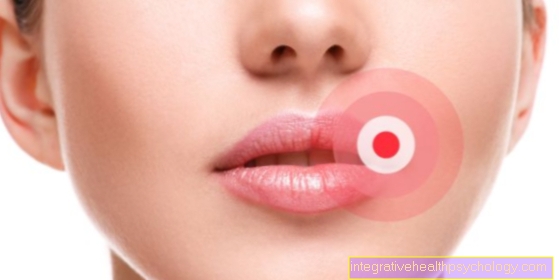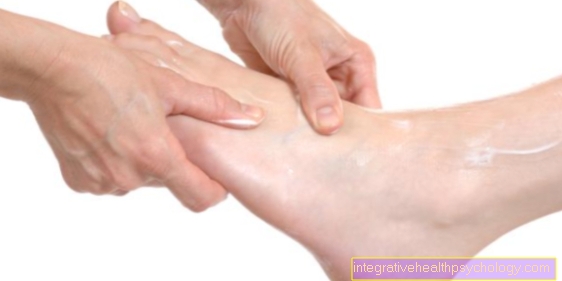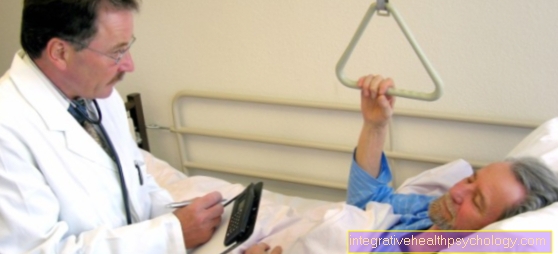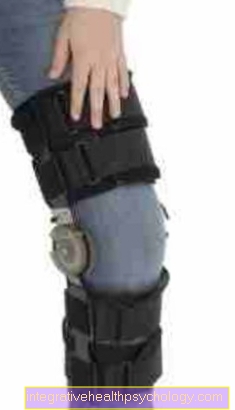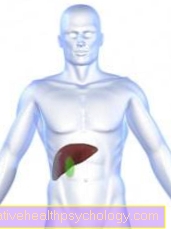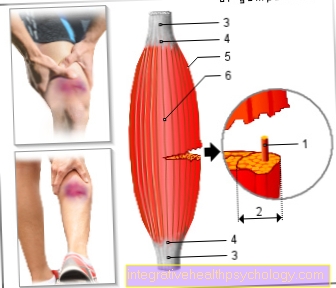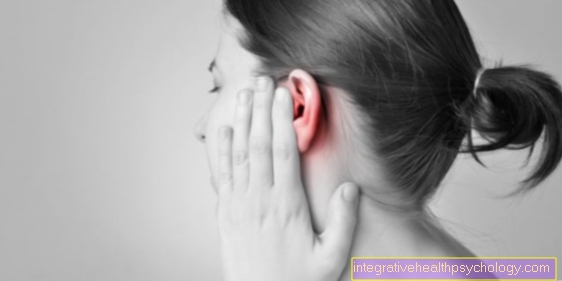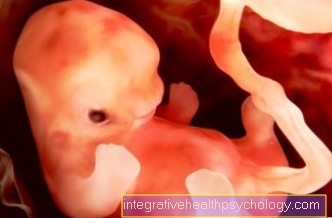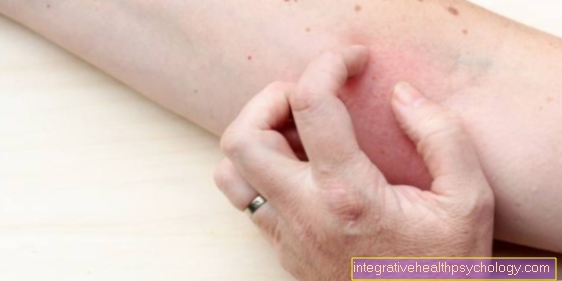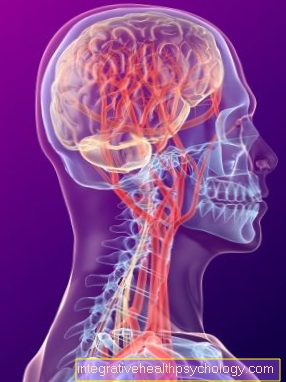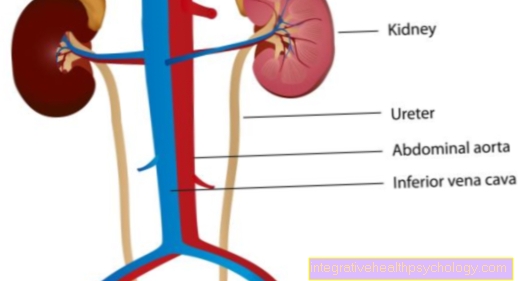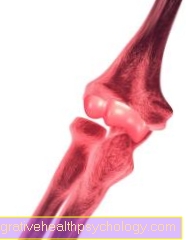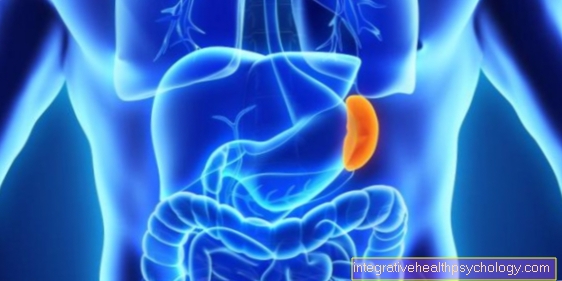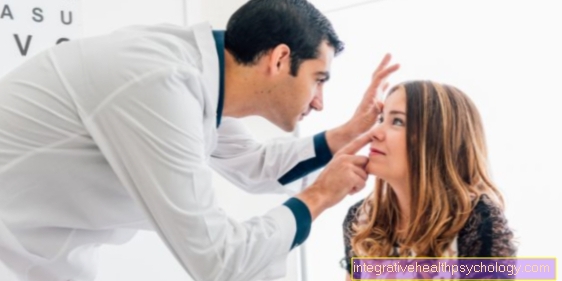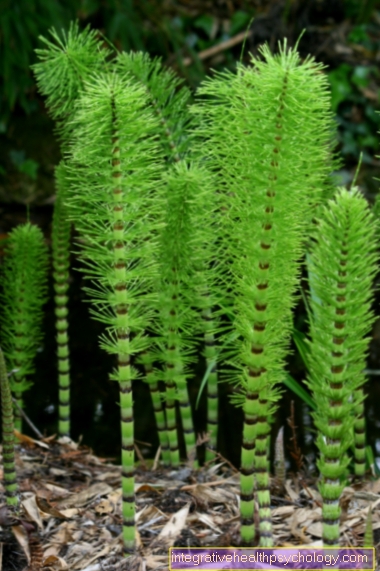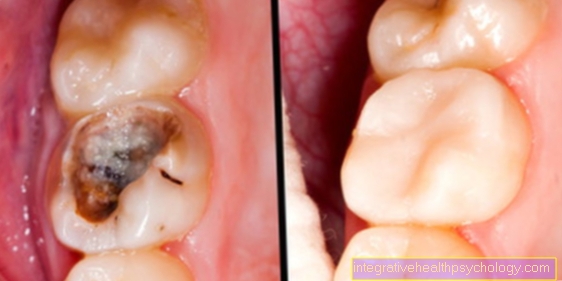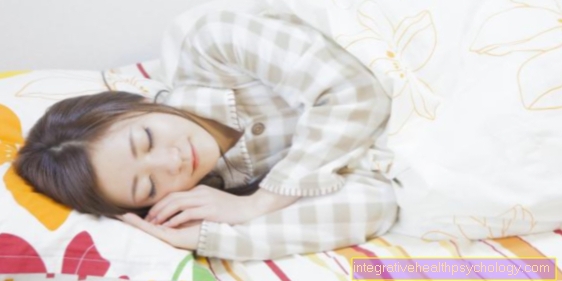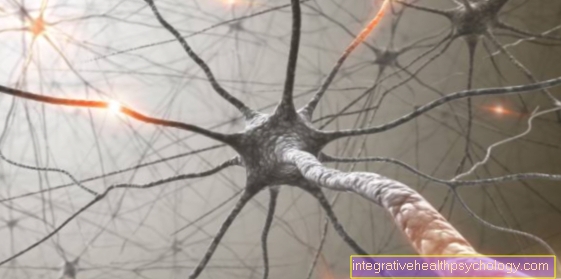Nervous system
Synonyms
Brain, CNS, nerves, nerve fibers
English: nervous system
definition
The nervous system is a superordinate switching and communication system that is present in all more complex living beings.
The nervous system is used, roughly simplified, to integrate and coordinate information for an organism with:
- the reception of stimuli (information) that affect the body from the environment or arise in the body itself (e.g. pain, sensory impressions ...)
- the conversion of these stimuli into nervous excitations (nerve impulses, so-called action potentials), their transmission and processing
- the transmission of nervous excitations or impulses to the organs, muscles etc. (i.e. in the periphery) of the body.

tasks

There are special facilities in the nervous system for each of these subtasks:
- Certain recording or receiving devices, the receptors in the nervous system, are responsible for the reception of information.
Like the sensory organs (e.g. ears, nose, eyes, etc.), they are limited to certain parts of the body and specialized in certain stimuli, e.g. on light or sound waves (see e.g. topic vision).
They are found particularly numerous in the skin to absorb tactile, vibration or temperature sensations, but also on the other organs (think of abdominal pain or headache). - All information generated in these receivers (nervous excitement) flow through feeding (afferent) Nerves as in an electrical cable to the central collection points, the brain and the spinal cord, also collectively called the central nervous system (CNS).
There they are collected, processed and meaningfully linked with one another, so that these two central organs as THE superordinate control center of all happenings in our body can be understood. - The results of this central processing in the nervous system and the connection of nerve impulses are now sent as information to the organs (usually referred to as the periphery) of the body by outgoing (or discharging, efferent) nerves.
There they cause corresponding reactions, e.g. Movements (when the impulses lead to the muscles), widening or narrowing of vessels (e.g. turning pale with fright) or influencing the activity of the glands (e.g. when we look at food or just think about a lemon, our mouths water because the Salivary glands are activated).
This functional three-part division of the nervous system - stimulus reception, stimulus processing and reaction to it - also corresponds to its spatial structure:
A single component in the nervous system is called a conduction arc. A conduction arc is the meaningful functional connection of two or more neurons (= nerve cells with their extensions).
You can have a simple elbow in the Nervous system imagine central switching point as information-supplying cable (brain or Spinal cord) Information leading cable. In relation to a simple reflex, for example the Patellar tendon reflex, that means: perception of the stimulus (stretching stimulus on the tendon) interconnection to the associated muscle execution of the movement (leg extension).
Often times, many of these "cables" are tied together and run as one nerve through the body. However, one cannot see on a nerve which part is the supplying and which is the from brain carries away information.
Function of the nervous system
The nervous system, as part of the organism, serves to absorb, control and regulate stimuli in the body and has a great influence on it. It is “communicatively” connected to the body and the environment.
The functionality of the nervous system can be simplified as follows: Via a stimulus receiver (Sensor, receptor) stimuli from the sensory organs are perceived and conveyed to the central nervous system (CNS) via a sensitive nerve fiber. Here the supplied (afferents) Information processed. The information is mostly coded as an electrical signal (Action potential).
Various nerve cells are involved in processing. The transfer of information takes place via messenger substances (Transmitter). Finally, the information reaches a deriving motor (efferent) Nerve fiber that leads from the central nervous system in the direction of the "center far" (Periphery) pulls to the success organ, e.g. to a muscle cell. The processed information is passed on there and a reaction ensues, e.g. that the muscle is tensed.
Figure nerve cell
- Nerve cell
- Dendrite
A nerve cell (neuron) has many dendrites that act as a kind of connecting cable to other nerve cells in order to communicate with them.

Spinal cord anatomy
The spinal cord runs in the form of a strand and has a (ventral or anterior) Furrow on which as Designated fissura mediana ventralis / anterior becomes. The spinal artery (A. spinalis anterior) runs through this.
Directly opposite the anterior fissure, there is another notch, the so-called Median dorsal / posterior sulcus. This continues inward into a partition, the so-called Median dorsal septum.
The front notch, so the Fissura mediana ventralis / anterior and the posterior septum divide the spinal cord into two halves, which behave in mirror image to one another.

Figure spinal cord
- Posterior median sulcus
- Posterior horn / gray matter
- White matter
- Anterior horn / gray matter
- Anterior median fissure
A cross section of the Backmarks shows the one lying in the inner area and formed "like a butterfly" gray matterwhich in a front and a rear "horn" is structured. The gray matter is made up of the fibrous Substantia alba framed, which clearly stands out due to its white color.
Depending on the localization, the expression of the "butterfly shape" of the gray matter can vary. In the sections of the spinal cord at the level of the chest and loins, there is a small gray matter on each side in addition to the anterior and posterior horns Side horn, which takes its place between the two horns.
In the middle of the gray matter is the Central canal (canalis centralis), in cross-section this shows up as a small hole. The central canal is filled with nerve water, the so-called liquor, and represents the internal liquor space of the spinal cord.
When looking at a longitudinal section you can see that the spinal cord has so-called thickenings in some places. Imtumescences having. These can be found in the cervical and lumbar or sacral areas and are due to an increased number of nerve bodies and nerve processes in this area, which are responsible for the nervous supply of the extremities, i.e. the arms and legs.
The broad Front horn (Cornu anterius) of the gray matter of the spinal cord contains the Nerve cell bodies, their Processes (axons) to pull different muscles (so-called. Motor neurons).
The projections of the nerve cell bodies of the anterior horn form the anterior motor (thus serving the movement) Part of the spinal nerve root, protruding from the side of the spinal cord.
in the Back horn the spinal cord is the entry point for the posterior, sensitive part of the spinal nerve roots again, which forwards the "felt" information generated in the periphery towards the brain (e.g. pain, temperature, sense of touch).
The nerve cell bodies responsible for sensitivity are, in contrast to the motor ones, in the so-called. Spinal ganglionwhich is outside the spinal cord (but still in the spinal canal).
Nevertheless, cell bodies are also found in the posterior horn (Cord cells) again, but these belong to the long front and side strands of the white matter.
The Side horn includes the vegetative nerve cells (Neurons) of the sympatheticus (in the thoracic and lumbar marrow) and des Parasympathetic (in the sacral cord).
The three horns described are only shown in cross section as "horns" ("butterfly wings"). Viewed three-dimensionally, these are actually columns in their context also of Columnae (Last) is spoken. The front horn column is called Anterior Columnawho have favourited Hinterhorn Column as Columna posterior and the side horn column as Lateral Colum designated.
The Columnae You shouldn't think of it as continuous strands of the same thickness, whole from top to bottom Spinal cord pull through, it is rather about stored together Cell groups, mostly consisting of five. The cell groups form small columns that can extend over several segments (levels of the spinal cord) if necessary.
These cell groups are called Core areas (Kernels = nuclei). The cells of such a group are then each time for the innervation of certain Muscles responsible. If e.g. If a group of cells extends over several segments, their cell processes (axons) also emerge from the spinal cord through several anterior roots.
After you exit, the processes merge again to form a nerve that pulls into a muscle. In this case one speaks of a peripheral nerves. If a peripheral nerve is damaged, this leads to a peripheral paralysis, which leads to the complete failure of the associated muscle.
If, on the other hand, a nerve root of the Nervous system damaged, this gets a radicular paralysis before (radix = root), i.e. certain functions of different muscles fail. (see also Root syndrome). In the area of the arms and legs, there is a special feature, here the spinal nerves come together to form nerve plexuses, the so-called plexus.
The area of skin that is supplied by the nerve fibers of a segment is called Dermatome.
The muscle fibersthat are supplied by the nerve processes of a segment are referred to as Myotome.
It should be remembered that it is not one segment that supplies one muscle, but rather many sub-functions of several muscles.
Nerve fibers that connect the two halves of the spinal cord with each other also run around the central canal; these are called commissure fibers (Commissura grisea). These ensure that one half knows what the other is doing.
This comparison serves the equilibrium process. The commisure fibers belong to the so-called Self-apparatus of the spinal cord on. This includes those nerve cells and their fibers that communicate with each other at the spinal cord level and thus enable processes without having to use the central circuitry via the brain. These include, for example, the self-reflexes of the spinal cord.
disc prolapse
In the case of a herniated disc, the gelatinous mass of the Intervertebral disc. This gel mass can in the Spinal canal happen and that Spinal cord harass.
If the pressure becomes too great, it can lead to pain, sensory disturbances, paralysis and complete loss of function.
Further information on this topic is available at: disc prolapse.
Whiplash trauma
In the case of whiplash injuries, sudden and unexpected violence on the head often results in damage to the Cervical spine and the surrounding muscles.
By “throwing the head”, the neck muscles try to head to intercept, however, is overtaxed with the forces due to the violence.
Further information on this topic is available at: Whiplash trauma
Nervous system and coordination of movements
The sporty movement can only through an interaction of the nervous system and Musculature will be realized. Information is obtained from higher centers of the CNS passed on to the motor cortex and from there via motor end plates to be transferred to the muscles. Movement coordination as a part of the Movement science is next to the motor learning More and more often used in training practice to improve athletic performance.
Further information is available at Movement coordination.
How can you calm the nervous system?
The nervous system can be calmed down by using the body's own messenger substances (Transmitter) influences. For example, have Endorphins (Synonym: the body's own morphine) a calming effect. They are often distributed more intensely Relaxation exercisessuch as B. at the progressive muscle relaxation after Jacobson or as with autogenic training or with calming movements and activities - which can be very different from one individual to the next. Meditation techniques, meditative breathing exercises and imaginations (Imaginations) of pleasant situations.
This is also an endogenous and calming messenger substance Melatoninwhich in particular has a sleep effect. Its release is usually intensified by darkness or when imagining (imagination) of darkness.
Relaxation exercises, pleasant, calming thoughts or reading a calming book can also mobilize melatonin. Also certain Scentse.g. Lavender or lemon balm, as well as compliance with the natural biorhythm can increase the release of the body's own melatonin and have a calming, sleep-inducing effect.
Nerve tonic can affect the autonomic nervous system nutritionwhich contains certain vitamins and ingredients have a calming effect. Also medicinal Treatments often use the "messenger system" (Transmitter system) and can produce calming effects. However, since this is always a kind of intervention in the body system, side effects in the short or long term cannot be ruled out.

